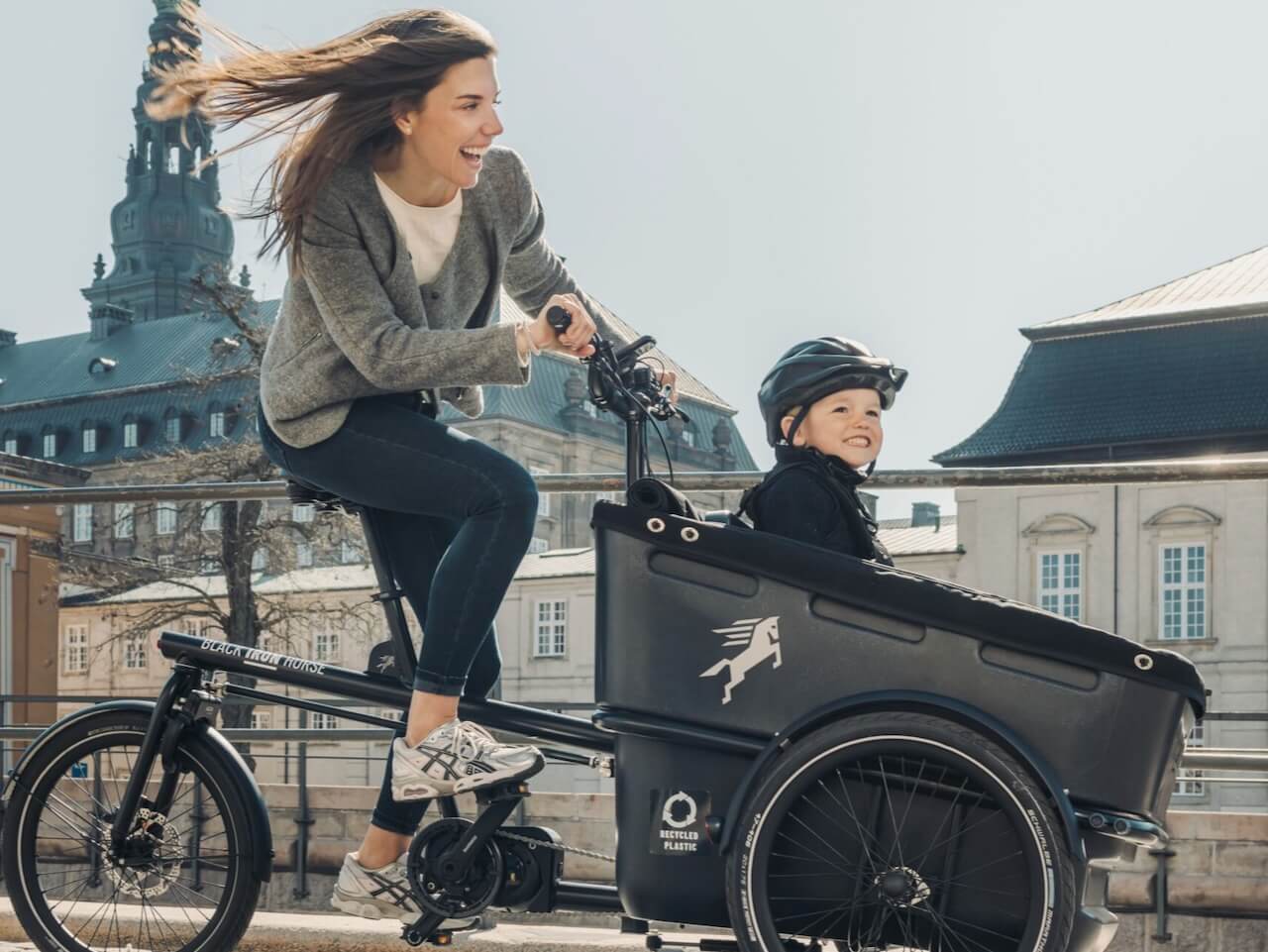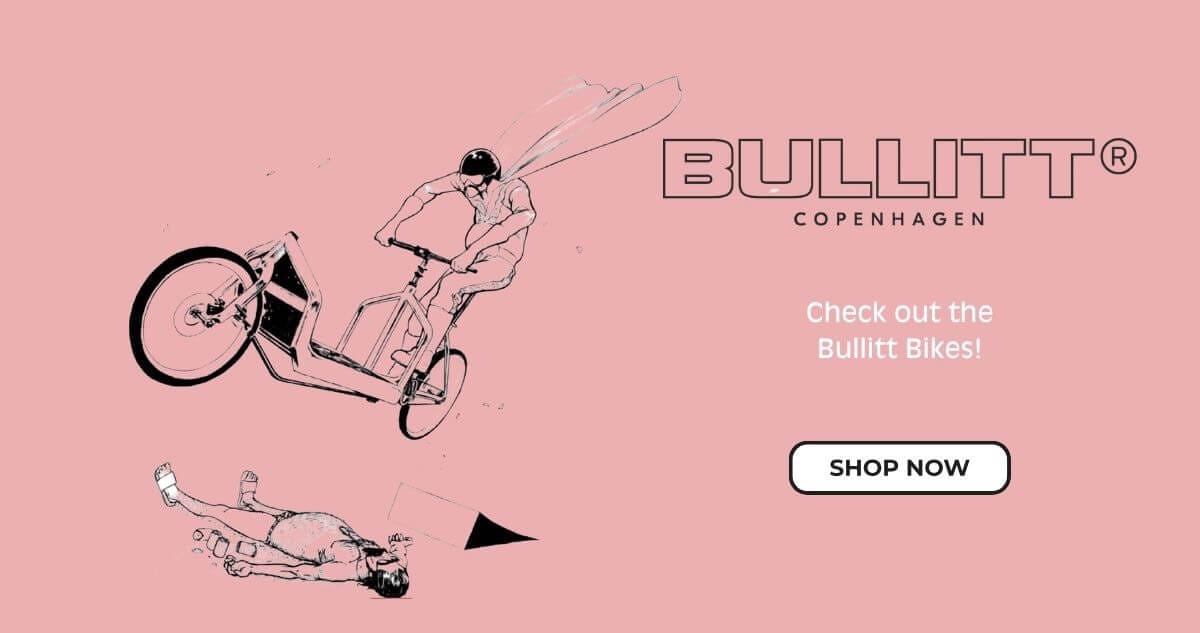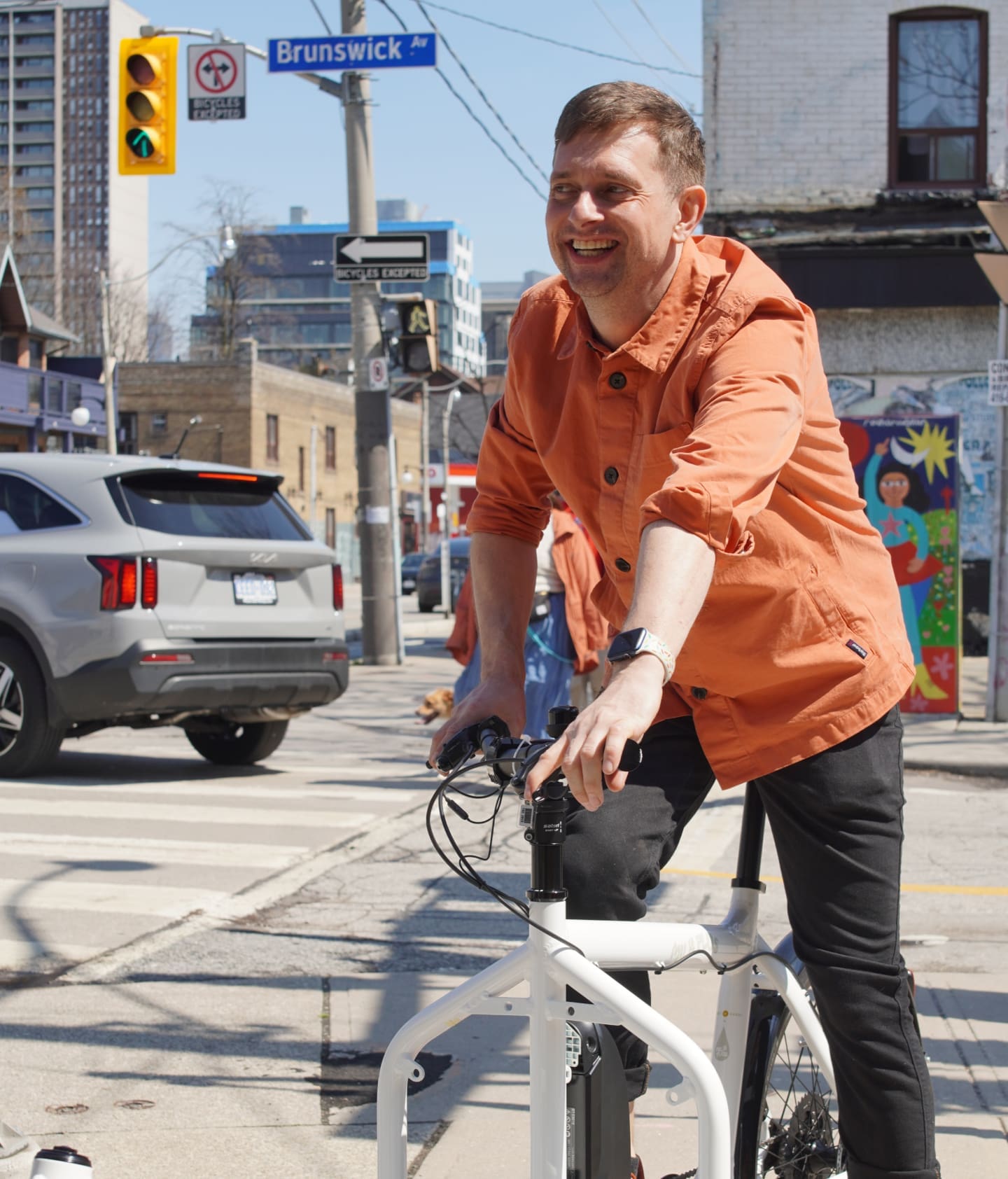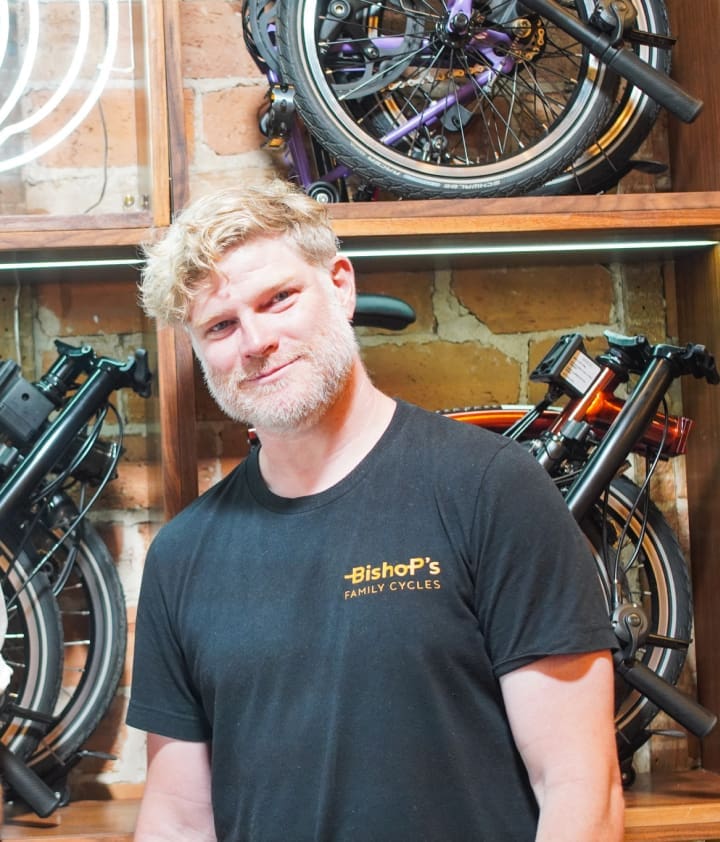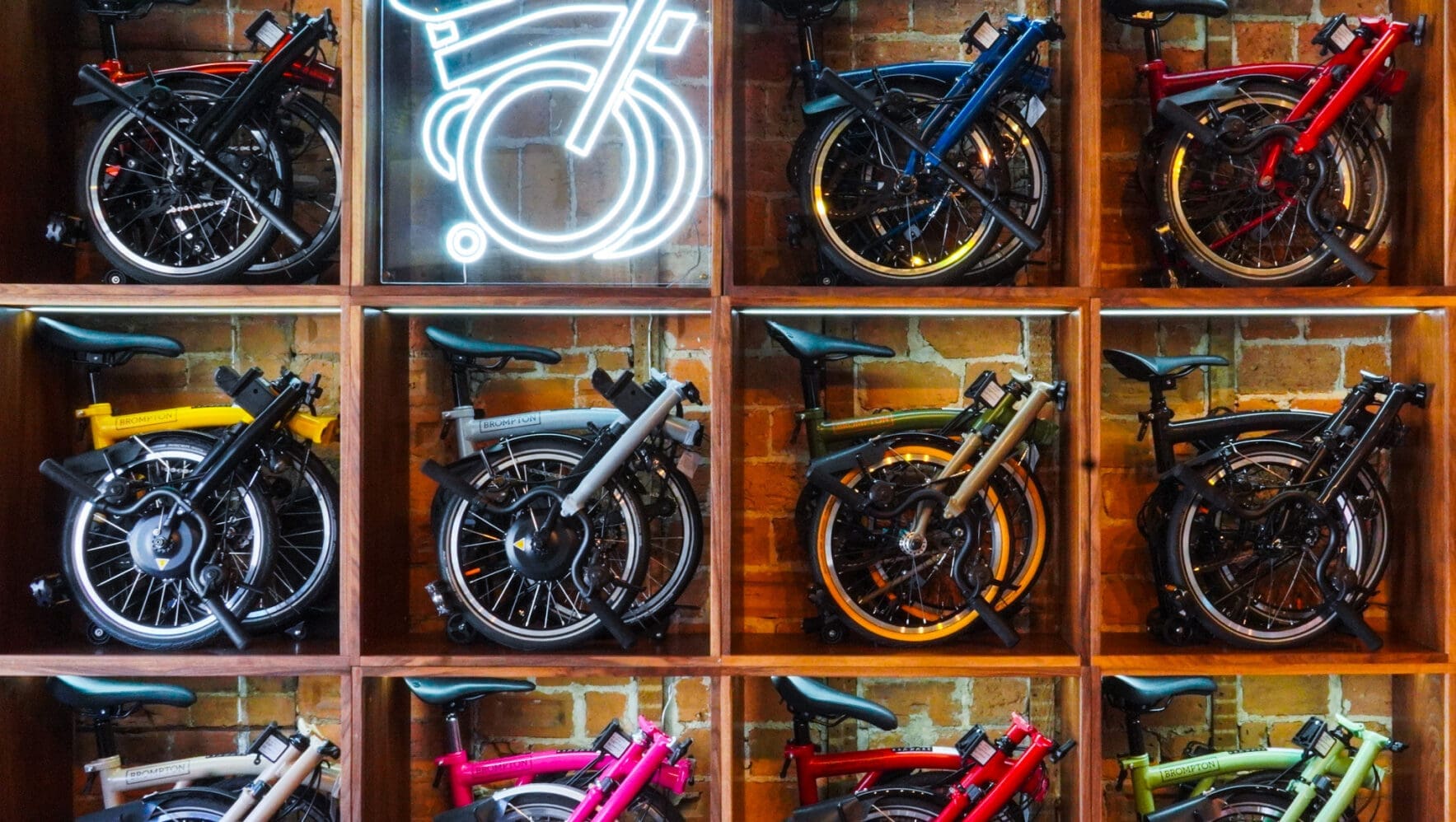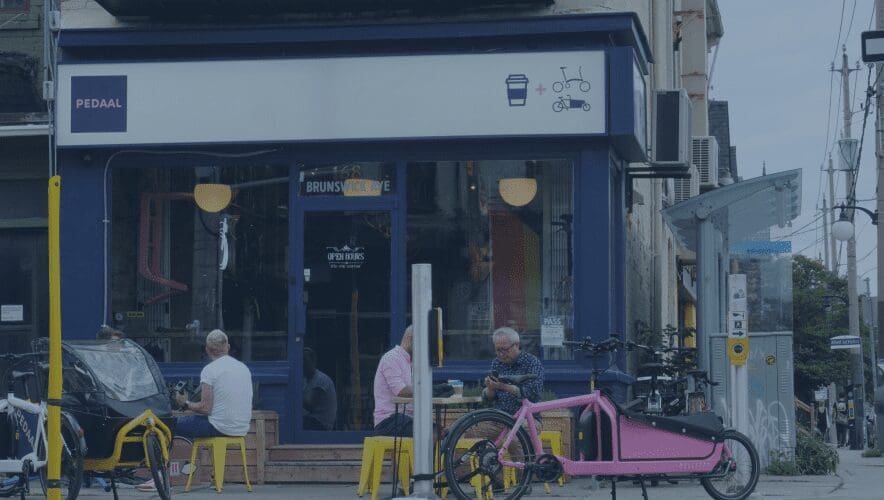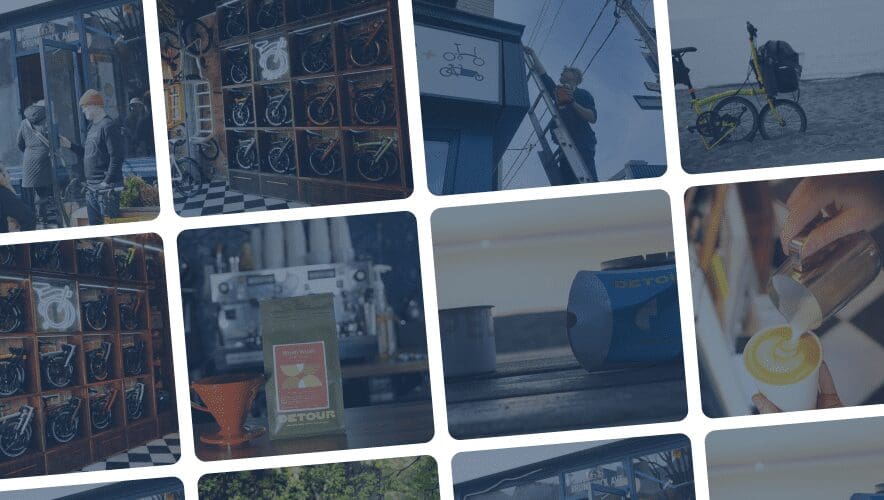What kind of bike is that? If you ride a cargo bike, get ready to hear this question – a lot. A common Google search, “bike with a box in front,” proves just how many people spot one and have no idea what to call it. Though cargo bikes have been a staple in Europe for ages, they weren’t mass-produced until 1999 – not that long ago! Just seven years later, Eric, one of Pedaal’s founders, began importing them to Canada. In many ways, the widespread availability of cargo bikes is still new, both here and in Europe. And, like someone seeing a cargo bike for the first time, it’s a tale of discovery. Why? Because riding one is a discovery! Very few things can change your life like a cargo bike.
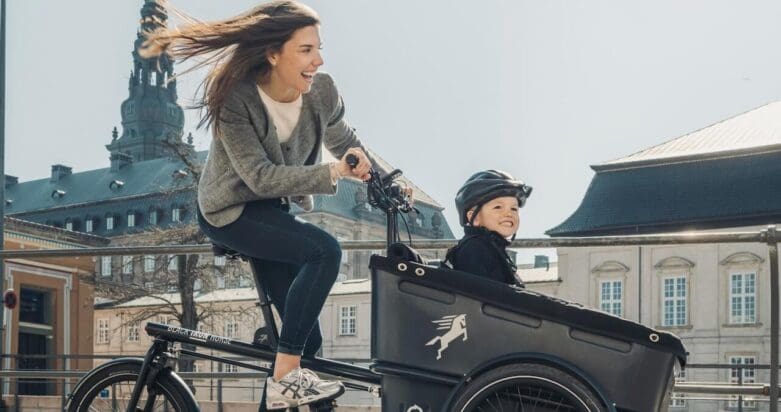
From Christiania to the Netherlands: The Cargo Bike’s Evolution
As Mark Kirkels writes, the cargo bike had its very beginnings in England but its first broad-market appeal in Copenhagen. Who was the cargo bike for? In 1978, on the anarchic car-free island of Copenhagen’s Christiania, the eponymous Christiana cargo tricycles began. These bikes were individually black-smithed for Christiania’s businesses and families who needed a bicycle with trunk space. But, outside of Christiania, 1980’s Copenhagen was a sprawled out, car-centric town. Here, the city was served by faster two-wheeled cargo bikes, known as “long johns” and produced as far back as 1923. So who was the cargo bike designed for? Families and businesses; and it’s still very much the same today.
The discovery moment, as legend would have it, is that sometime in the 1990’s a Dutchman by the name of Maarten Van Andel visited Copenhagen. At this time, the Danes were largely using three wheelers for children and two wheelers for freight, but Maarten’s flash of insight was that these two-wheelers would be terrific for carrying children. This was harder to imagine in Copenhagen given the lack of bicycle infrastructure at the time. But, a two-wheeled cargo could easily be transplanted to Holland’s vast network of bike lanes, and of course it could carry kids. Suddenly there was a market.
Safety First: How Infrastructure Shaped Cargo Bike Design
The buried narrative in the story here is safety. We believe safety should be your chief adjective when buying a cargo bike – especially if you’re going to carry kids. In our many trips to Europe over the last three decades we’ve noticed that the Dutch tend to ride two-wheeled cargo bikes and the Danish three-wheelers. These are artifacts that reflect the safety of the ecosystems in which they developed. The two-wheeler was a remarkable discovery for the Dutch, because it could safely plug-and-play as a kids carrier into Holland’s vast bicycle infrastructure. But, in Copenhagen, the three-wheeler felt like a safer bet in a city that was still developing safe infrastructure. Today, however, things have changed. Copenhagen has surpassed Amsterdam as the world’s most bike friendly city; and it’s become far more common to see kids carried in two-wheelers than three.
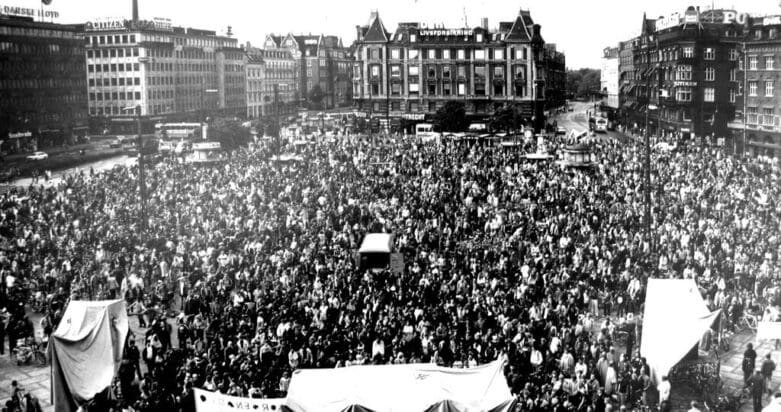
The Push for Bike Lanes and a Safer Cargo Bike
The story goes like this. Back in 1980’s Copenhagen, Christiania bikes felt safe on the car-free island of Christiania, but a massive citizens movement (see photo above) was starting to demand bike lanes throughout the city. If citizens on the island of Christiania could tote kids around in bikes, the larger citizenry demanded the same. It became quite apparent that a different cargo bike was required than the Christiania. Unlike the Dutch, the Danes did not look to the two-wheeler – despite it being a Danish invention. The reason is that trikes are simply safer. Instead, they looked to improve on the Christiania tricycle, and these improvements would all have to do with that word safety.
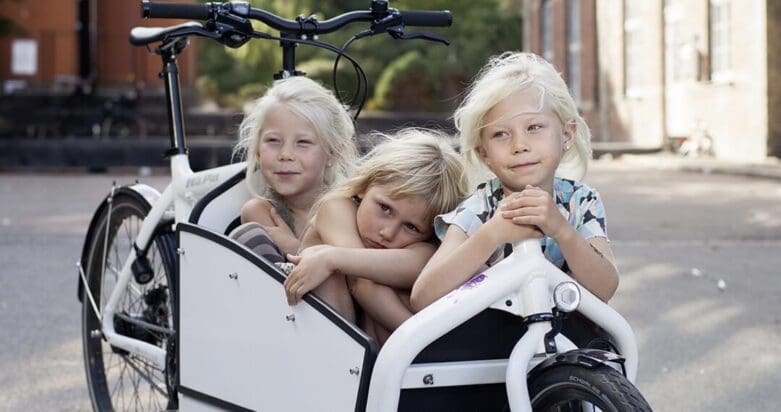
The Limitations of the Christiania Trike
The biggest problem with Christiania was that the car-free ecosystem it developed didn’t have the same safety demands as larger Copenhagen. Big design problems began to emerge. First, the Christiania wasn’t designed to safely absorb automobile impacts. Second, the Christiania had very poor handling. To steer a Christiania the rider has to steer the entire box. This is called center-pivot steering. With this type of steering, the ability to react in traffic – or, quite literally your ability to handle a situation – was reduced in direct proportion to the increased weight of the box. Despite it’s poor handling, many companies still produce cargo trikes like this (Triobike, Babboe, Bunch, Winther) and we don’t recommend it one bit.
Ackermann Steering
Wider availability of a safer solution came from a young upstart: Nihola. Nihola was started when the Danish newspaper Politiken declared that cargo bikes could only compete against cars if they could hold two kids, groceries and a case of beer. But, the article continued, it had to be light, stable and safe. To answer this, Nihola introduced two innovations that would become the industry benchmark. First, an impact-resistant box to absorb traffic accidents. And second, independent steering that could offer quick reactivity. A Nihola’s box is composed of steel roll-bars and high-impact Lexan plastic. And, instead of the entire box steering, the Nihola steers exactly like a car – called Ackermann steering. That may not seem revolutionary, but today it’s one of the few three-wheelers that take safe handling seriously.
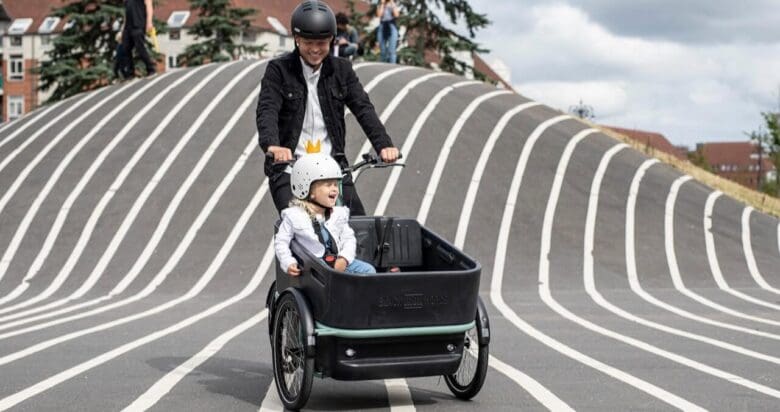
Steering New Courses
The founders of Pedaal were once responsible for importing Nihola bikes into Canada. The founder, Niels Holm Larsen (yes, that’s Ni-Ho-La) remains a dear friend. But, in the same way Nihola replaced Christiania, we’ve seen new leaders emerge from Copenhagen. Copenhagen’s Black Iron Horse constructs their bikes in fidelity to Nihola’s benchmarks, but have surpassed Nihola as industry leaders. The boxes on the Black Iron Horse are lighter, made of recycled plastic, and remain highly impact resistant. Critically, the steering is the same as Nihola. But whereas Nihola stubbornly chooses lower-quality European electric-assist motors, Black Iron Horse uses recognized Shimano motors that are globally serviceable.
Redefining Freedom: The Shift from Cars to Proximity in Urban Living
Many urban North Americans can find themselves in this story. In North America freedom once found its metaphor in the fantasy of the car, but this myth is being challenged as people put more and more value on closer proximity. Cars were never designed for proximity, but today’s cities generally are. Today, urban property value is measured by “walk scores,” which essentially measure value by proximity. This is a vast change from the suburban model where walk scores didn’t determine property value whatsoever. And, it is this suburban model that the car was designed for. Something else, in other words, is required in dense urban centres.
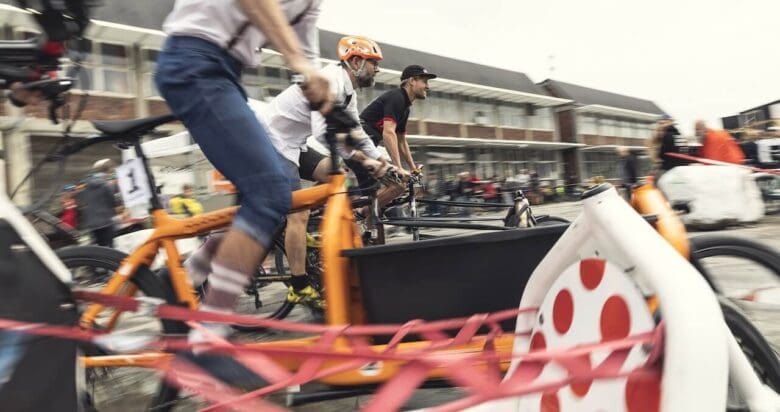
The same story of suburbanization and then urbanization happened in Copenhagen. And, to illustrate this, we might look at the rise, fall and resurrection of the two-wheeled bike in Denmark. We mentioned earlier that Copenhagen was once a car-centric town. From 1970 to 1990, per capita automobile usage increased nearly 70 percent in the Copenhagen area. In this time, the truck replaced the cargo bike (which, recall, was used mostly for freight, not children). But this increase of motor-vehicles caused hellish gridlock. The reason is that too many people were using the wrong vehicle for the distance required. This is why the cargo bike experienced a renaissance in Copenhagen. It’s the same reason FedEx is now using cargo bikes across Canada. (Side note: the founders of Pedaal were behind this too!).
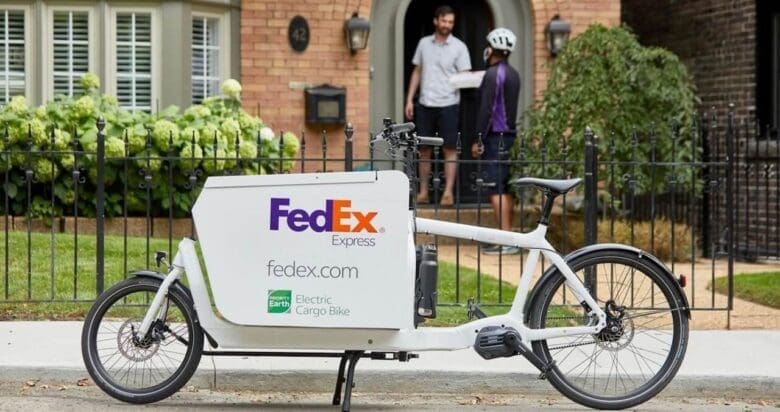
If you want to mathematize all of this, it all comes down to distance. Trucks tend to get stuck in places where trip-distances are usually shorter, what transportation engineers call “the last mile.” And, vehicles get stuck in the “last mile” because there are too many vehicles making the same short trip. Studies show that the majority of car trips in North America are under three miles. If you live downtown, ask yourself whether the majority of your trips are under three miles. Chances are good!
The Short Tale of the Longtail
No matter what, it all comes down to safety. Many people reading this might be geo-mapping their lives and reflecting that actually yes, the majority of my distances are under three miles, and, oh god please get me out of my car! But, no one’s going to hop onto a cargo bike unless they know their family is safe. We’ve observed that the safest cargo bike design comes from countries who intentionally design safe bicycle infrastructure. Holland and Denmark are the best examples.
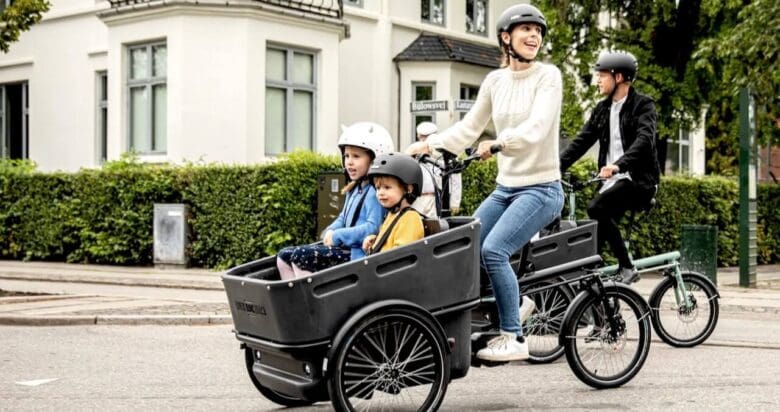
A good way to contrast this is to consider North America’s answer to the cargo bike: the longtail. Anyone who has ever ridden a bike with a child seat on it knows how wonky and unsafe it feels. This is the only problem the longtail has solved. It keeps the kids in the back, lowers the center of gravity, and increases the bicycle’s footprint to increase stability. What it does not do is answer the question of impact resistance, and that’s a critical concern in a continent where the car is still king. In short, if North America’s bicycle infrastructure tends to be somewhat haphazard, the same could be said of North American cargo bike design. Long-tails are great for car-free recreational bike paths, and that’s about it.
Fun vs. Safety: Rethinking the Priorities of Cargo Bikes
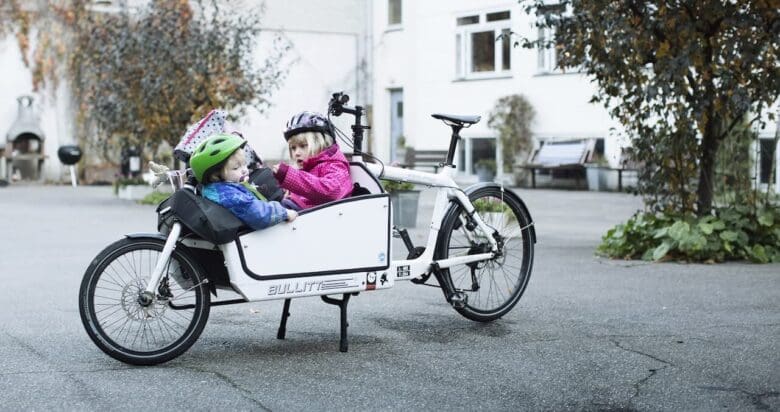
But, there’s a reason longtails sell: longtails feel like regular bikes. You could argue that a longtail prioritizes fun for the rider and the kids, but it misses out on the critical safety question. This “fun first” approach betrays a deep assumption that the North American bike industry continues to make, that bikes are designed for recreation first, not transportation. In some ways, longtails “preach to the choir” of existing “fun-first” cyclists who want more capacity because there’s a new kid in their lives. However, what we’ve experienced in our years of selling cargo bikes is that there is a safety-first customer – who probably is not presently a cyclist – who the industry largely ignores. In any case, why do fun and safety have to be at odds? Safety isn’t relative, but fun certainly is. To combine them should be no great fiets.
Breaking the Tribe: Redefining Cycling for Everyday Life
If North American cargo bikes tend to be geared to existing cyclists, you might be feeling that a cargo bike is not your tribe. But, at Pedaal, we’d like to get away from tribalism altogether. In Holland – where 16 million people ride bikes daily – no one identifies themselves a cyclist unless cycling is their sport. And, riding your kids to school, it should be said, is not a sport. To help deconstruct this tribalism, we’ll use some wisdom from the Dutch. In Holland, there are three types of bicycle riders. First, you have the wielrunners – the “wheel runners” – those who self-identify as sporty cyclists. Then, you have the professioneels, these are akin to the couriers who ride cargo bikes for FedEx, who know that time is money, and who ride at breakneck speeds to deliver packages. Then you have the fietsers (in Dutch a “fiets” is a bicycle) who is “just someone on a bike.” That’s the majority of Holland’s 16 million people.
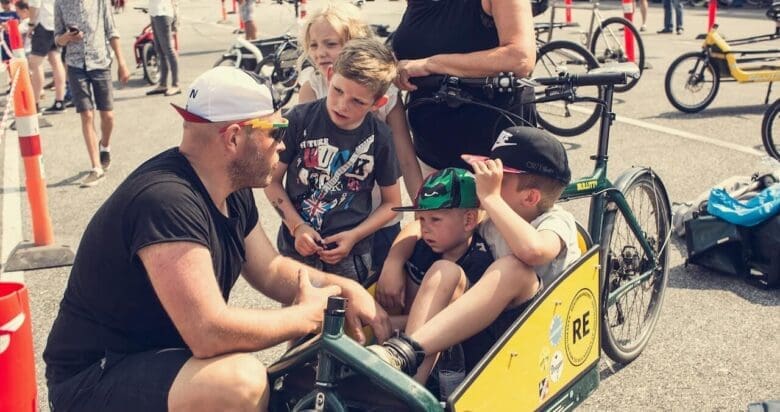
Balancing Fun and Safety: The Weight Dilemma for Cargo Bikes
So, if you’re a bit more of a wielrunner we can see why you’d want a cargo bike that feels like a regular bike. But, at the same time, we don’t this should compromise your child’s safety. The problem for the wielrunner is that most European cargo bikes tend to be extraordinarily heavy. And sure, that takes some fun out of the equation. When Martin Van Andel took the Danish two wheeler to Holland, he nearly doubled the weight. The problem is that this weight became the accepted norm for all cargo bikes that followed. For instance. Holland’s Urban Arrow weighs 112lb , Germany’s Riese & Muller Packster starts at 92lb, and America’s first attempt at making a front-loader – the Trek Fetch 4 – weighs a whopping 165lb! So, it’s no wonder North America’s wielrunners are buying longtails. What else would they buy?
Rethinking Fun and Safety: The Bullitt Solution to Longtail Dilemmas
Now, before we present an answer it might be interesting to interrogate the longtails definition of fun. Is it really more fun for the kids to stare at their parents’ sweaty back? Is it really more fun for the kids to be behind them and not part of a conversation? Our bet is that most longtail owners want the kids up front for fun’s sake, and want the kids in a safe cargo box for safety’s sake. But, they also want a bike that doesn’t feel like a Chevy Suburban. Fair enough!
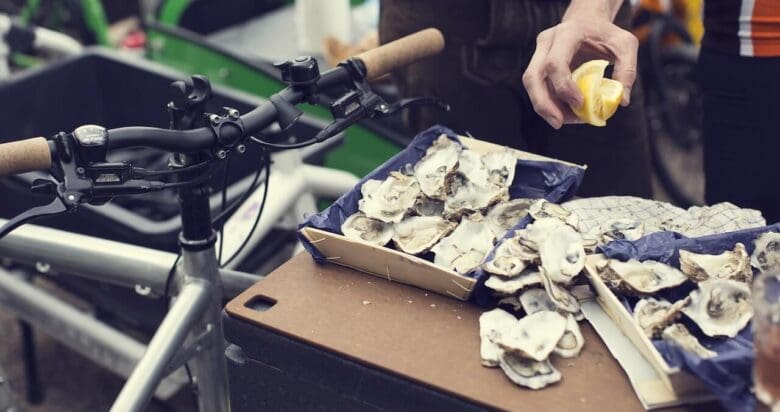
Well, there is an answer! But, we have to go back to the source – before Martin Van Andel’s discovery – to correct the drift. In Denmark, the two-wheeled cargo bike has always been a lightweight affair and it continues to be. Danish two-wheelers are proof that designers don’t need to increase weight to increase safety. We actually have no idea why the Dutch two-wheeled cargo bikes are so heavy, except that everyone inexplicably seems to ride a heavy bike in Holland; perhaps some vestige of Dutch no-fun Calvinism. (Confession: the writer was raised Dutch Calvinist). Consider instead Denmark’s Bullitt bikes. An electric assist Bullitt starts at just 60lb – that’s half the weight of its competitors. And, it comes with a wide-array of kid-carrying options that offer extreme impact-resistance, and in some cases, even roll-bar technology. In fact, a Bullitt is so light that people don’t just use the bike in the city, but pile camping gear into the box and take the bikes outside of the city. That might not be your jam, but the capacity is there.
The Truth About Cargo Bike Weight: Why Bullitt Leads the Way
You might raise your eyebrow at this. Surely there must be some reason that two-wheeled cargo bikes are so heavy? Well, there isn’t. Is a Bullitt bike strong? It’s stronger than all of its competition. Like all Danish two-wheelers, the Bullitt’s original DNA is commercial delivery. Here in Canada, FedEx chose Bullitt for their fleet, and each bike logs 15,000km a year and does so without issue. Sure, many people reading this won’t be using their cargo bike for commercial use. Nonetheless, there’s a vast increase in quality when something is commercial grade rather than consumer grade. Bullitt bikes are commercial grade. And, they’re half the weight. This is the same reason we carry Brompton folding bikes at Pedaal, the original design continues to correct everything that came after it.
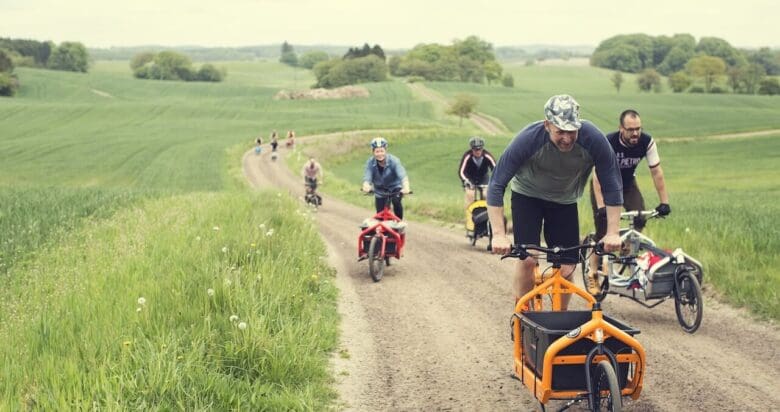
The Bullitt: A Cargo Bike for Every Rider and Every Need
Like a Brompton, the Bullitt is infinitely adjustable to a rider’s height and disposition. If your disposition is more relaxed fietser then we install the relaxed swept-back handlebar option, raise the handlebar (an easy flick of a lever) to an upright riding position and put on a wider seat. We also generally install a damper-kit for the steering to add another dimension of control. For a sportier disposition we install the flat handlebar option, drop the handlebar down with a flick of a lever, and generally put on a slightly narrower seat.
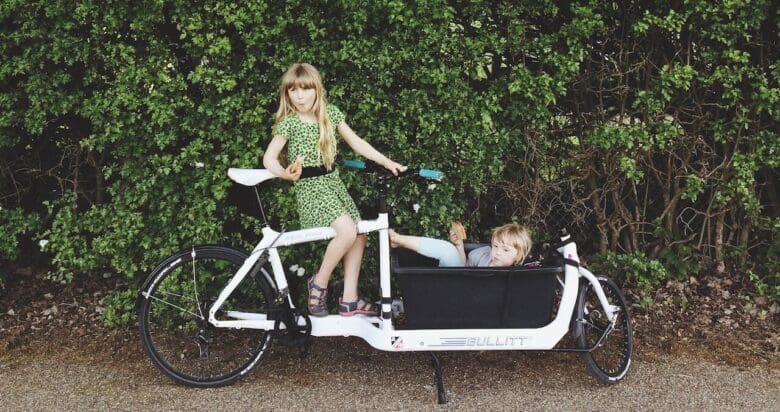
But, the best part about a Bullitt is the expansiveness of its use-case. This is a bike you could carry kids in, but it could also be a bike to deliver goods, pick up groceries, carry your tools or contracting gear. It’s even a bike that people have taken on longer distance tours, with their tents packed up. The Bullitt’s empty flatbed means you can install any number of kits that work with whatever stage your family, business, or personal life is at. So, when it comes to asking who a Bullitt cargo bike is for, the answer is everyone!
Cargo Bikes: The Perfect Solution for Urban Living
What is a cargo bike? It’s a bike with trunk space that takes fun and safety seriously. And, who is a cargo bike for? It’s for anyone who lives, works and plays downtown, and – by virtue of this – conducts the majority of trips in distances too far to walk or too close to drive. Cargo bikes are broken up into two categories. The first is three-wheelers, or cargo-trikes. These bikes are indisputably safer than two-wheelers because they plant three points across the ground and require no balancing. In cities where infrastructure is still developing, these are often the preferred tool for new bicycle riders (or fietser). But, the greater stability of a trike means very little if the overall handling is not safe. The leader here is Black Iron Horse, who produce best-in-class cargo trikes with safety benchmarks like independent front steering and impact resistant boxes.
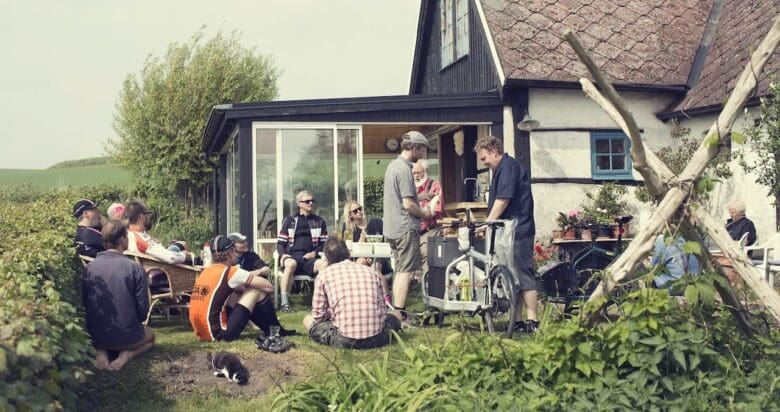
The Right Cargo Bike for You: Why Denmark Sets the Standard
If your city has good-enough bicycle infrastructure or you, as a cyclist, feel safer with a better handling bike, a two-wheeler has indisputably better handling than a cargo tricycle. But again, it depends on which two-wheeler you get. As we’ve seen, the two-wheeler is a Danish invention that was revolutionized by the Dutch. The Dutch – who have a heavy-hand when it comes to safety – tend to make all bikes inexplicably heavy, arguably stripping the bikes of a whole lot of fun. The Dutch revolution spawned a series of even heavier bikes to follow, which to the Danish never made much sense.
In North America, the response was lighter longtail bikes. These bikes originated from successful recreational bike companies in suburban North America (Trek in Madison, Benno and Yuba in SoCal) who, we might say, lacked the real-world context. But, whether you’re a new bike rider, an existing bike rider, or even a professioneel, a return to the origins reveals the answer. Denmark’s Bullitt produces cargo bikes that are half the weight of most competition, feature best-in-class safety, and above all, are proven at a commercial level.
Next Steps!
You can see our full selection of cargo bikes here.
Got a question? Great! Contact us here or book a sales-appointment here!

